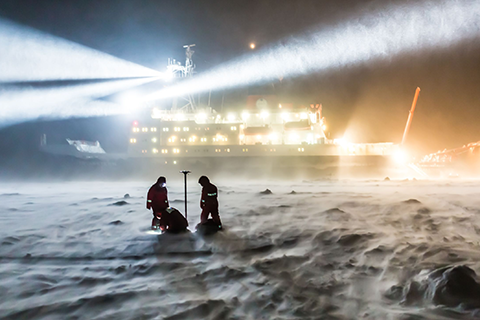Annual forecast challenge and other research highlight the complexity of sea ice prediction
Rotator Image:

In 2015, NOAA’s Climate Program Office (CPO) invited grant proposals from sea ice and climate scientists looking to better understand and predict Arctic sea ice behavior, on timescales ranging from days to decades. This is our second story on some of the resulting research.
Category:
Highlights:
- Multiple activities, from fishing to fuel delivery, depend on reliable forecasts of Arctic sea ice extent on a seasonal timeframe.
- Simple approaches, such as predicting when ice will re-freeze in the fall based on when it melted the previous spring, give mixed results at best because sea ice behavior is complex.
- Recent efforts at sea ice prediction involve crowdsourcing. NOAA is a sponsor of the Sea Ice Prediction Network, which solicits predictions from experts and amateurs alike.
- A current challenge in Arctic-summer-minimum predictions is the “spring predictability barrier”: reliable forecasts can’t be generated before May or June. Improvements in satellite technology may alleviate this problem.
- Arctic sea ice retreat increases year-to-year variability, making accurate predictions even more elusive.
Published Date:
Wednesday, April 8, 2020
Get The Details…
tom.diliberto
Powered by WPeMatico



